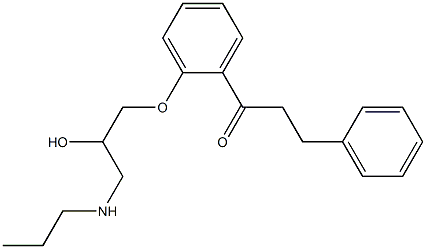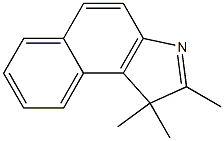Paraffin wax
Synonym(s):Paraffinum Liquidum;Paraffinum Perliquidum;Paraffinum solidum
- CAS NO.:8002-74-2
- Empirical Formula: C21H27NO3
- Molecular Weight: 341.44398
- MDL number: MFCD00132833
- EINECS: 232-315-6
- SAFETY DATA SHEET (SDS)
- Update Date: 2025-12-17 09:49:34

What is Paraffin wax?
Description
Paraffin wax, also commonly called ‘paraffin’, is a colourless or white, tasteless, odourless, translucent waxy solid. Paraffin wax has a typical melting point between about 46°C and 68°C. Pure paraffin wax is a combustible substance and insoluble in water but soluble in petroleum solvents and stable under normal conditions of use. Paraffin has been identified as an excellent electrical insulator. It is also used in the manufacturing of paraffin papers, candles, food packaging materials, varnishes, floor polishes, to extract perfumes from flowers, in lubricants, and cosmetics. It is also used in water-proofing wood, and cork.
Chemical properties
Paraffin wax is colorless or white with an odorless mass. It consists of a mixture of solid aliphatic hydrocarbons. Paraffin is used in the manufacture of paraffin papers, candles, food packaging materials, varnishes, floor polishes, to extract perfumes from flowers, in lubricants, and cosmetics. It is also used in waterproofing wood and cork.
The Uses of Paraffin wax
Paraffin wax can be used as a phase changing material in a wide range of applications which include solar based water heaters, microcapsules and thermal energy devices (TEDs).
Definition
Paraffin wax is a solid mixture of hydrocarbons, obtained from petroleum.
General Description
Paraffin wax is white translucent tasteless odorless solid. Density 0.88- 0.92 g / cm3. Insoluble in water. Melting range 47-65°C. Used in candles, lubricants, crayons, floor polishes, cosmetics, chewing gum.
Reactivity Profile
Paraffin wax, may be incompatible with strong oxidizing agents. Charring may occur followed by ignition of unreacted portion and other nearby combustibles. In other settings, mostly unreactive. Not affected by aqueous solutions of acids, alkalis, most oxidizing agents, and most reducing agents. When heated sufficiently or when ignited in the presence of air, oxygen or strong oxidizing agents, they burn exothermically.
Health Hazard
Exposures to paraffi n for a prolonged period cause several types of skin disorders, The adverse health effects to skin include chronic dermatitis, wax boils, folliculitis, comedones, papules, melanoderma, and hyperkeratoses. Studies of Hendricks et al. indicated the development of carcinoma of the scrotum in workers exposed to crude petroleum wax. Carcinoma of the scrotum in occupational workers began with a normal hyperkeratotic nevus-like lesion, which subsequently resulted in a squamous cell carcinoma.
Pharmaceutical Applications
Paraffin is mainly used in topical pharmaceutical formulations as a component of creams and ointments. In ointments, it may be used to increase the melting point of a formulation or to add stiffness. Paraffin is additionally used as a coating agent for capsules and tablets, and is used in some food applications. Paraffin coatings can also be used to affect the release of drug from ion-exchange resin beads.
Safety
Paraffin is generally regarded as an essentially nontoxic and nonirritant material when used in topical ointments and as a coating agent for tablets and capsules. However, granulomatous reactions (paraffinomas) may occur following injection of paraffin into tissue for cosmetic purposes or to relieve pain. Long-term inhalation of aerosolized paraffin may lead to interstitial pulmonary disease. Ingestion of a substantial amount of white soft paraffin has led to intestinal obstruction in one instance.
Synthesis
Synthesized by the Fischer–Tropsch process from carbon monoxide and hydrogen, which are catalytically converted to a mixture of paraffin hydrocarbons. The lower molecular weight fractions are removed by distillation and the residue is hydrogenated and further treated by percolation through activated charcoal.
Storage
Paraffin wax is stable, although repeated melting and congealing may alter its physical properties. Paraffin should be stored at a temperature not exceeding 40°C in a well-closed container.
Properties of Paraffin wax
| Melting point: | 58-62 °C ((ASTM D 87)) |
| Boiling point: | 322 °C |
| Density | 0.82 g/mL at 20 °C |
| refractive index | n |
| FEMA | 3216 | PARAFFIN WAX |
| Flash point: | 113 °C |
| storage temp. | Store below +30°C. |
| solubility | Soluble in chloroform, ether, volatile oils, and most
warm fixed oils; slightly soluble in ethanol; practically insoluble in acetone, ethanol (95%), and water. Paraffin can be mixed with
most waxes if melted and cooled. |
| form | extra-low viscosity |
| color | white |
| Odor | odorless |
| explosive limit | 0.6-6.5%(V) |
| Dielectric constant | 2.1-2.5(0.0℃) |
| CAS DataBase Reference | 8002-74-2 |
| EPA Substance Registry System | Paraffin waxes and Hydrocarbon waxes (8002-74-2) |
Safety information for Paraffin wax
Computed Descriptors for Paraffin wax
Paraffin wax manufacturer
JSK Chemicals
New Products
4,4-Difluoropiperidine hydrochloride tert-butyl 9-methoxy-3-azaspiro[5.5]undecane-3-carboxylate Indole Methyl Resin N-Isopropylurea N,N-Dicyclohexylcarbodiimide(DCC) MELDRUMS ACID 5-METHYLISOXAZOLE-4-CARBOXYLIC ACID Magnessium Bis glycinate Zinc ascorbate 1-bromo-2-butyne 2-acetamidophenol 9(10H)-anthracenone Erythrosin B, 4-Piperidinopiperidine 2-((4-morpholinophenylamino) (methylthio) methylene) malononitrile 2,4-dihydroxybenzaldehyde 3-(4-morpholinophenylamino)-5-amino-1H-pyrazole-4-carbonitrile Methyl 2-methylquinoline-6-carboxylate 2,6-dichloro-4-nitropyridine 4-Bromo-2-chlorobenzonitrile 2-(benzylamino)acetic acid hydrochloride 4-(tert-Butoxycarbonylamino)but- 2-ynoic acid 3,4-dihydro-2H-benzo[b][1,4]dioxepine 1-Phenyl-1-cycloprppanecarboxylicacidRelated products of tetrahydrofuran








You may like
-
 Paraffin wax 98%View Details
Paraffin wax 98%View Details -
 Paraffin Wax White Soft pure CAS 8002-74-2View Details
Paraffin Wax White Soft pure CAS 8002-74-2View Details
8002-74-2 -
 Paraffin Wax Pellets (Type 2 - 58-60) extrapure CAS 8002-74-2View Details
Paraffin Wax Pellets (Type 2 - 58-60) extrapure CAS 8002-74-2View Details
8002-74-2 -
 Paraffin wax 58-60 °C CAS 8002-74-2View Details
Paraffin wax 58-60 °C CAS 8002-74-2View Details
8002-74-2 -
 Paraffin Wax CAS 8002-74-2View Details
Paraffin Wax CAS 8002-74-2View Details
8002-74-2 -
 Ceresin wax, white CAS 8002-74-2View Details
Ceresin wax, white CAS 8002-74-2View Details
8002-74-2 -
 Paraffin wax 52-54 °C CAS 8002-74-2View Details
Paraffin wax 52-54 °C CAS 8002-74-2View Details
8002-74-2 -
 Paraffin Yellow pure CAS 8002-74-2View Details
Paraffin Yellow pure CAS 8002-74-2View Details
8002-74-2
